What is Laser Cutting in Manufacturing: A Beginner’s Guide
Using laser cutting technology, industries are capable of producing designs with high precision and efficiency. Nowadays, it is used in everything from aerospace to automotive to medical to electronics manufacturing.
This guide provides a comprehensive overview of laser cutting, how it works, its components, machines, and its limitations.
What is Laser Cutting?
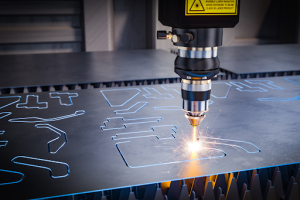
Laser technology involves cutting through materials with an extremely precise laser beam, by melting, burning, or vaporising the metal with the laser, a smooth, clean edge is created.
Laser-cutting machines operate on a relatively simple but highly efficient principle, which is explained below:
- Laser Generation. The high-intensity laser is generated by a device known as a laser resonator. Depending on the laser type (CO2, fibre, etc.), the light is generated in a different manner.
- Beam Control. The laser beam is focused and directed onto the workpiece by mirrors and lenses. Focused laser beams produce intense heat that melts, vaporises, or burns the materials they touch.
- Cutting Process. Laser beams burn, melt, or vaporise material as they move across it, resulting in a clean cut. In order to maintain a clean cutting area, molten materials are usually expelled with gases such as nitrogen and oxygen.
- Motion Control. A laser cutting machine is equipped with a CNC (Computer Numerical Control) system, which guides the laser as it travels along the material based on the design file.
This process offers a high level of precision, capable of cutting thin metals and complex shapes with fine detail.
At Kirmell, we use advanced laser cutting systems to deliver precise, clean cuts for industrial and commercial applications. Whether it’s thin sheet metal or detailed component work, our services are designed to reduce waste and maximise production quality.
How Many Types of Lasers Are Used in Manufacturing?
Different types of laser technology are used in laser cutting machines, each suitable for a specific application and material. There are several types of lasers commonly used in cutting machines, including:
CO2 Lasers
A CO2 laser uses a mixture of carbon dioxide, hydrogen, and nitrogen to generate laser light. Lasers of this type are ideal for cutting materials that are not made up of metal, for instance, wood, plastic, and glass.
Several industries use CO2 lasers, such as sign making, woodworking, and acrylic cutting.
Fibre Lasers
Lasers generated by fibres use a solid-state medium, often ytterbium, to generate their laser light. Fibre optic cables are then used to transmit the laser.
A fibre laser is well known for its ability to cut metals very precisely, especially reflective metals like aluminium and brass. The automotive industry and the aerospace industry use them frequently.
Diode Lasers
A diode laser is a solid-state laser that operates with semiconductor diodes as the laser source. These machines are often used to engrave fine details on thin materials and to cut thin objects.
A diode laser is commonly used for applications requiring low to medium power, such as engraving on jewellery or medical equipment.
Neutron-doped Yttrium Aluminium Garnet (Nd:YAG)
These lasers use neodymium ions doped yttrium aluminium garnet crystals to generate light. Lasers of this type produce wavelength-specific light.
It is commonly used in high-precision applications such as the manufacturing of medical devices, aeronautics, and research laboratories.
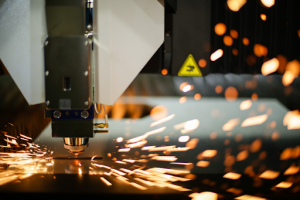
Types of Laser Cutting Machines
There are several types of machines available on the market, each designed for specific needs and applications:
2D Laser Cutting Machines
Machines such as these are used to cut flat materials. Precision shapes and patterns can be cut with the laser head moving along the X and Y axes.
The sheet metal industry often uses this tool for cutting metals like aluminium, steel, and stainless steel.
3D Laser Cutting Machines
A 3D laser cutting machine uses a combination of 3-axis and 5-axis movements to cut three-dimensional objects. They are capable of creating intricate shapes with a high degree of precision.
Often used for manufacturing 3D parts for the automotive, aerospace, and medical industries. Read in detail about 2D and 3D laser cutting and their differences.
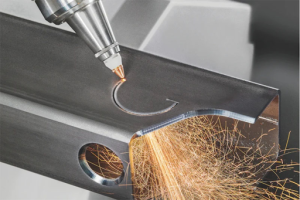
Tube Laser Cutting Machines
This type of machine is specifically designed to cut tubular materials. During the cutting process, the tube is rotated in a fixture while it cuts through its surface.
Tubular materials are used in furniture, automotive, and structural components.
If you need industry-leading laser cutting technology or expert consultation, Kirmell provides both the machinery and support you need to optimise your manufacturing process. Contact us right now to learn more about our capabilities and how we can assist you.
How Does a Laser Cutting Machine Work?
Laser-cutting machines are sophisticated systems that use several key components to cut a variety of materials with high precision and quality. All of these components play a critical role in the machine’s performance, no matter the thickness of the material or how fast or intricate the cut is.
We take a closer look at the key components of laser-cutting machines below.
The Laser Source
Laser cutting begins with a laser generator, which emits a beam of highly concentrated light. The type of generator depends on the material CO2 for non-metals and fibre lasers for metal laser cutting.
Beam Delivery System
Once generated, the beam is directed through a system of mirrors or fibre-optic cables. This setup guides the laser to the cutting head, where it’s further focused to a precise point using a lens.
Material Interaction
The focused beam heats the material to its melting or vaporisation point. Simultaneously, a stream of gas (like oxygen or nitrogen) is used to blow away molten material, leaving a clean, smooth cut.
CNC-Controlled Movements
Modern systems are operated using CNC (Computer Numerical Control), which interprets digital designs from CAD software and moves the laser with micron-level accuracy. This automation allows for repeatability and complex patterns in custom laser-cut components.
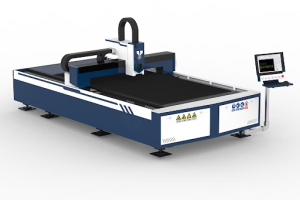
What Metal Materials Can Be Cut by Laser Cutting Machines?
The laser cutting machine is a versatile tool for cutting a wide range of metals with high precision.
In the following sections, we will discuss the types of metal materials which can be cut using laser technology, their thickness, and how much power is required for optimal cutting performance.
Mild Steel (Carbon Steel)
Mild steel is one of the most frequently used metals that is cut using these machines since it is relatively inexpensive and easy to cut. A wide range of industries use it, including construction, automotive, and factory production.
Thickness Range. With sufficient power and efficiency, lasers can cut mild steel from 0.5mm and up to 25 mm or more in thickness.
It’s all about laser power. Lasers with a power of 1kW to 2kW are typically sufficient for cutting mild steel up to 3 mm thick. Mild steel sections thicker than 15mm or 25mm can be cut more efficiently by lasers with higher powers, such as 3kW or 6kW.
Stainless Steel
One of the most common laser-cutting materials is stainless steel, which resists corrosion. Due to its strength and durability, it’s often used in the medical and food industries.
Thickness Range. With lasers, stainless steel can be cut at thicknesses between 0.5 mm and 25 mm. The use of specialised equipment and a higher-power laser may be required when cutting thicker stainless steel.
Laser Power. Lasers with a power range of 1kW to 2kW can be used on stainless steel sheets up to 3 mm thick. Lasers with a power of 3kW are recommended for cutting stainless steel sheets between 6 and 12 mm thick. Stainless steel sheets exceeding 12 mm in thickness require lasers with a power of 4kW to 6kW for accurate cutting.
Aluminum
Laser cutting is possible because aluminium is lightweight, non-corrosive, and heat conductive. The reflective nature of aluminium makes it challenging to cut, requiring a laser with special features.
Thickness Range. It is possible to cut aluminium to thicknesses ranging from 0.5 mm to 20 mm. If you want to cut thicker materials with a clean edge, you may need a more powerful laser.
Laser Power. Typically, 1kW to 2kW lasers can be used to cut thin aluminium sheets (up to 3 mm). An aluminium section thicker than 5mm will require a laser power of 3kW to 6kW.
Aluminium is also often cut using fibre lasers since CO2 lasers do not cope well with its reflective properties.
Copper
Copper has excellent conductivity and corrosion resistance and is used in electronics and electrical applications. Despite this, its high reflectivity and thermal conductivity can make cutting it more challenging.
Thickness Range. Generally, copper sheets with a thickness ranging from 0.5 to 10 mm are suitable for laser cutting. The power and cutting techniques required to cut thicker sheets are specialised.
Laser Power. Lasers of 3kW to 6kW are typically used to cut copper sheets. The high power needed to achieve a clean cut is due to the fact that copper dissipates heat quickly.
Brass
Brass is another metal commonly processed by laser cutting. A brass product is valued for its strength, resistance to corrosion, and attractive appearance.
Thickness Range. Lasers can cut brass in thicknesses from 0.5mm to 10mm effectively.
Laser Power. For effective cutting of brass, you need about 3kW to 6kW of laser power.
Kirmell’s laser cutting services are ideal for processing a wide range of metals, including mild steel, stainless steel, aluminium, and brass. With advanced fibre laser machines, we can handle custom thickness requirements while ensuring minimal waste and clean finishes every time. Contact us now for your project to get a quote from our experts.
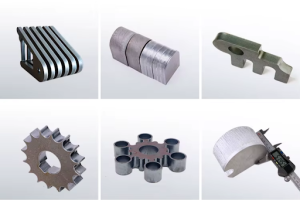
Limitations of Laser Cutting
Despite offering so many benefits, this technology has some drawbacks and limitations too, such as:
Initial Investment Costs
Industrial-grade laser cutters, especially those used for metal laser cutting, can be expensive. However, the long-term savings in time and precision often justify the initial spending.
Material-Specific Challenges
Some highly reflective or heat-sensitive materials require special care. For instance, cutting copper or PVC can be problematic without the right laser system or fume extraction measures.
Thickness Constraints
While fibre lasers can handle thick metals, there’s a point where other methods like plasma cutting become more efficient and cost-effective.
Maintenance Requirements
Lenses, mirrors, and filters require regular cleaning and occasional replacement. A well-maintained system ensures long-term accuracy and operational safety.
Safety Concerns
Laser systems can cause burns, fires, or eye damage if mishandled. Operating one safely requires proper training, protective gear, and ventilation.
Laser Cutting Solutions by Kirmell
At Kirmell, we specialise in providing advanced laser-cutting products tailored to your specific needs. For those seeking industry-leading laser cutting solutions, we offer the technology and expertise to optimise your manufacturing processes.
Visit Kirmell to learn more about our services, or get in touch with us to discuss how we can support your business with our cutting-edge laser technology.
Conclusion
Laser cutting in manufacturing has fundamentally transformed how we produce goods, offering a blend of accuracy, speed, and flexibility. Whether used for crafting one-of-a-kind art pieces or mass-producing parts for global industries, its impact is undeniable.
From metal in aerospace to designing custom laser-cut components for fashion, the laser cutting technology is only growing more powerful and accessible. As we move toward smarter, greener production methods, this method will remain at the heart of innovation and creativity.
FAQ’s
What materials can be cut using laser cutting machines?
What is the difference between CO2 and fibre lasers?
How precise is laser cutting compared to traditional cutting methods?
Is laser cutting suitable for mass production?

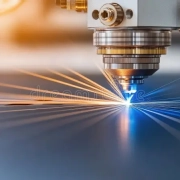
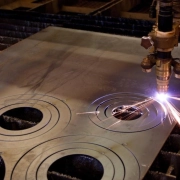
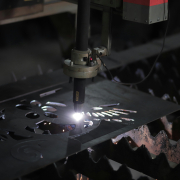
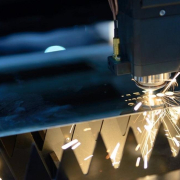
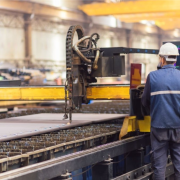
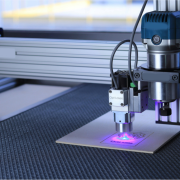
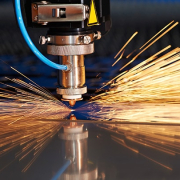
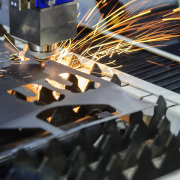



Leave a Reply
Want to join the discussion?Feel free to contribute!